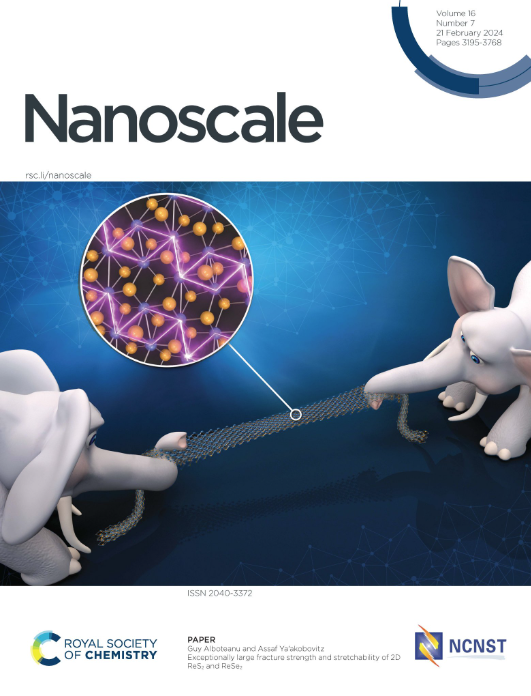Start-up Flow of Nanoscale Particles and their Periodic Arrays: Insights from Fundamental Solutions of the Unsteady Stokes Equations
IF 5.8
3区 材料科学
Q1 CHEMISTRY, MULTIDISCIPLINARY
引用次数: 0
Abstract
Start-up flows induced by nanoscale particles and their periodic arrays are studied theoretically. At nanoscopic lengths and time scales, the interplay between inertial and viscous forces in the fluid results in time dependent (unsteady) flows important in the study of nanoporous materials and microswimmer locomotion. Here, these flows are studied by developing fundamental solutions, i.e. Green's functions considering point particles, of the unsteady Stokes equations. It is found that the approach to steady state is characterized by a viscous penetration depth l=(4 ν t)1/2, where ν is the kinematic viscosity and t time. For an isolated particles, fluid inertia leads to vortex flows with a rotation axis roughly a distance l from the particle. As time increases, the vortex distance to the particle increases diffusively as l2 ∽ 4ν t, with the limit l→∞ corresponding to the steady state limit. In a periodic array, inertia also leads to vortex flows. Furthermore, the presence of the other array particles results in an unsteady back flow that develops simultaneously to the local flow around a test particle. The back flow develops with a characteristic time scale proportional to L2/ν, where L is the size of the unit cell.求助全文
约1分钟内获得全文
求助全文
来源期刊

Nanoscale
CHEMISTRY, MULTIDISCIPLINARY-NANOSCIENCE & NANOTECHNOLOGY
CiteScore
12.10
自引率
3.00%
发文量
1628
审稿时长
1.6 months
期刊介绍:
Nanoscale is a high-impact international journal, publishing high-quality research across nanoscience and nanotechnology. Nanoscale publishes a full mix of research articles on experimental and theoretical work, including reviews, communications, and full papers.Highly interdisciplinary, this journal appeals to scientists, researchers and professionals interested in nanoscience and nanotechnology, quantum materials and quantum technology, including the areas of physics, chemistry, biology, medicine, materials, energy/environment, information technology, detection science, healthcare and drug discovery, and electronics.
 求助内容:
求助内容: 应助结果提醒方式:
应助结果提醒方式:


